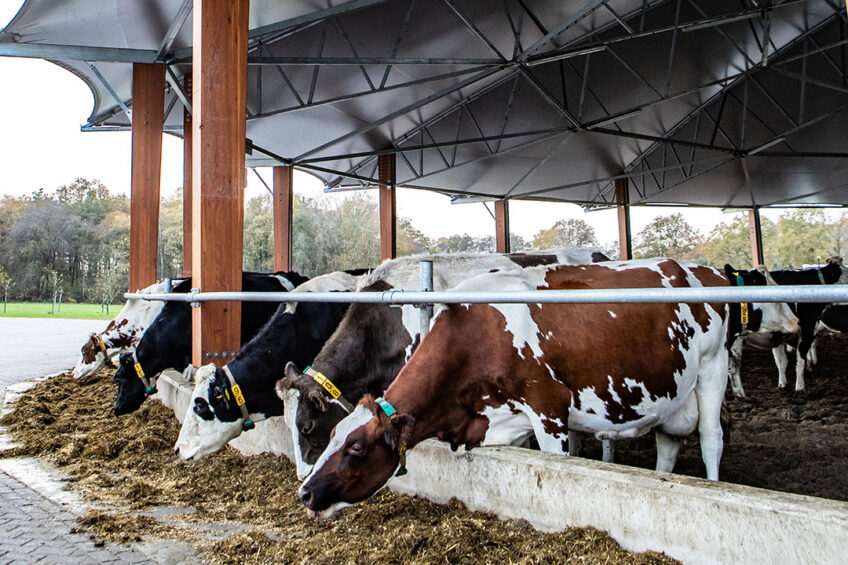Pros and cons of extended lactation in dairy cattle

The cow reaches her peak milk production approximately 3-6 weeks after parturition, and then a gradual decline in the yield takes place. A lactation period of 305 days is standard. Still, as the demand for milk and other dairy products continues to rise, many farmers are looking for ways to increase production and profitability. One strategy that has been gaining popularity in recent years is extended lactation, which has its pros and cons.
Dairy Global sat down with Eline Burgers, PhD, from the Animal Nutrition department of Wageningen Livestock Research, to discuss this topic.
One of the main benefits of extended lactation is that it can lead to increased farm profits as it relates to lower feed input and fewer veterinary treatments. Studies have shown that cows kept lactating for longer periods of time can produce more milk than those that are dried off early. One study found that cows kept lactating for 12 months produced an average of 5,500 kg of milk per year, while those that were dried off after 9 months produced an average of 4,000 kg of milk per year.
Extended lactation period
The lactation period can be extended in different ways, but some European farmers extend lactation by delaying insemination after calving. According to Burgers, farmers select specific cows for a longer waiting period for insemination based on milk production, parity, or body condition. The success of delayed breeding depends on several factors that can be supported by using hormonal treatments, genetics, or assorted management techniques. If farmers extend the lactation for all their cows, a drop in overall milk production can be expected. Multiparous cows that have a very long extended lactation may end up having very low milk production. Primiparous cows can handle an extended lactation very well due to their persistent lactations.
Burgers also discussed the potential for genetic improvement. She stated that genetic improvement would not occur directly from extending lactation, but cows with high milk production were usually the ones for whom lactation was extended. This would mean fewer offspring from these cows, which could delay genetic improvement but with sexed semen, this genetic lag may be counteracted.
Extended lactation – improved cow health

Another advantage of extended lactation is that it can improve the health and well-being of dairy cows. When cows are dried off early, and at high milk production, they risk developing health problems such as mastitis and lameness. Delayed insemination decreases disease risk, as cows are dried off later in lactation when milk production is reduced. Cows that give birth every year also have annual high-risk periods for diseases. By keeping them lactating for longer periods of time, farmers can reduce the risk of some health issues and improve the overall health of their herd.
While extended lactation does decrease the risk of disease, there are some risks specifically connected to extended lactation, such as potential metabolic disorders (i.e., ketosis and fatty liver). However, it varies per cow. Studies have shown that cows kept lactating for longer periods of time have more difficulty getting pregnant, which can negatively impact the overall productivity of the herd. But when insemination was deliberately delayed, some studies reported improved reproductive performance.
An economic analysis has shown that cows with extended lactations have lower annual costs for feed and inseminations and fewer veterinary treatments, but also lower annual revenues for milk production.
Number of cows and environmental concerns
Burgers believes that by selecting high-producing cows for extended lactation, farmers may be able to reduce the number of cows they need to manage, making their work easier. She also noted that this practice is being investigated in other European countries like Germany, Sweden, and Denmark, as farmers in these countries also run into similar issues of production and disease.
When asked about any environmental concerns related to extending lactation, Burgers stated that it depends on cow selection and how the practice is implemented on the farm. Increased methane emissions have been reported in dairy cows during the late stages of lactation, but when high-producing cows are selected, this may be limited. Extended lactation has the potential to increase the lifespan of cows, which could result in a more environmentally friendly outcome over the lifetime of the cow.
Pros of extended lactation include:
- Cows can produce more milk within 1 lactation.
- Extended lactation can reduce the number of pregnancies per cow, reducing the risk of health issues associated with giving birth, such as uterine infections and ketosis.
- Farmers can reduce costs associated with frequent pregnancies and calf rearing, and feed costs.
- When breeding is delayed, the reproductive performance of cows is often improved.
Cons of extended lactation include:
- Extended lactations may decrease milk production per annum.
- Especially for multiparous cows with very long lactations, there is an increased risk for fattening at the end of the lactation, and related metabolic disorders around the next calving.
- Prolonging the lactation period may require more frequent monitoring of cows, which can increase labour costs for farmers.
- Extended lactations could contribute to increased greenhouse gas emissions.
Overall, while extended lactation can offer some benefits, it has its downsides. It is important for farmers to weigh the pros and cons and consider factors such as their specific herd and management practices before deciding whether or not to implement extended lactation.
Additionally, individual countries within the EU may have their own regulations and guidelines in place for the management of dairy cattle, including those related to extended lactation. These may vary depending on the country and should be consulted for specific information.
References are available upon request.
Join 13,000+ subscribers
Subscribe to our newsletter to stay updated about all the need-to-know content in the dairy sector, two times a week.










